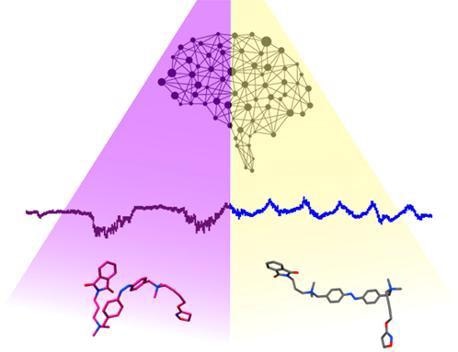Jun 18 2021
The communication between billions of neurons governs the different states of the brain. This network forms the basis of all human behaviors, memories and perceptions.
 Controlling of brain state transitions using a molecule responsive to light. Image Credit: IBEC/IDIBAPS.
Controlling of brain state transitions using a molecule responsive to light. Image Credit: IBEC/IDIBAPS.
This network is often considered a “black box” as it is difficult for researchers and clinicians to access. This is because only limited tools are available to perform precise and spatiotemporal analyses on brain neuronal behavior.
Now, scientists from the Institute for Bioengineering of Catalonia (IBEC), in association with August Pi i Sunyer Biomedical Research Institute (IDIBAPS), have succeeded for the first time in regulating the brain’s neuronal activity using a light-responsive molecule.
The study also involved members from the Autonomous University of Barcelona (UAB) and was performed in the frame of the Human Brain Project of the EU. It explained the first way to directly photomodulate the transitions between brain states in vivo.
The study was headed by ICREA Research Professors Pau Gorostiza (IBEC-CERCA, BIST, CIBER-BBN) and Mavi Sanchez-Vives (IDIBAPS). It was recently published in the Advanced Science journal.
The results revealed that the new molecule, called Phthalimide-Azo-Iper (PAI), could specifically and locally regulate the muscarinic cholinergic receptors — in other words, the acetylcholine receptors, a brain neurotransmitter crucial for many processes, like memory or learning attention.
Control of Brain States Transitions with Light
Brain state transitions, like waking up from a coma or going from being asleep to awake, depend on the transmission of electrical and chemical signals among groups of neurons implicated in different functions. Present-day techniques, like ultrasound or transcranial-magnetic stimulation, used to modulate neuronal activity have limitations in spectral and spatiotemporal performance.
Another high precision technique also employs light to regulate the neurons in optogenetics but it relies on genetic manipulation, which poses safety concerns that make it difficult for its translation to humans.
The researchers employed photopharmacology to resolve these issues. To achieve this, they used the molecule that was previously developed at IBEC. PAI is responsive to light and enables a spatiotemporally controlled modulation of brain neurons, binding and regulating the activity of muscarinic cholinergic receptors, which are major receptors involved in the interaction and communication of neurons.
With the help of this approach, the cholinergic-innervation-dependent brain state transitions could be controlled by light using drugs that are chemically designed to be photosensitive.
The control of neuronal activity in the brain is key to perform both basic and applied research, and to develop safe and accurate techniques to perform therapeutic brain interventions in clinical neurology.
Fabio Riefolo, Study Co-First Author, Institute for Bioengineering of Catalonia
Changes in Brain States
Different states and transitions of the brain are linked to brain function. They are closely related to changes in brain activation patterns. Consequently, this reflects the parameters and activity of specific neuronal networks. Manipulating neurons with a spatiotemporal control is, thus, fundamental to establish the relationship between brain states and behavior, and to study the effect of neuronal circuits on specific behaviors.
Moreover, the PAI molecule is pharmacologically specific for a muscarinic receptor subtype, M2, which provides interesting prospects to analyze the pharmacology of brain waves.
Researchers modulated the spontaneous emerging slow oscillations in neuronal circuits and reversibly explored the brain oscillatory frequency by applying PAI to the intact brain, followed by white light. The new chemically engineered tool helped induce and investigate more thoroughly, in a non-invasive and controlled way, brain transitions from sleep- to awake-like states through direct illumination.
Neuronal activity in the human brain is driven by molecules called neuromodulators, for example, through the binding of acetylcholine (ACh) to cholinergic receptors. However, the contribution of different cells expressing ACh receptors in the global brain behavior is not fully understood yet.
The use of selective and photoswitchable cholinergic drugs, such as PAI, to realize a spatiotemporal precise modulation of brain activity paves the way to perform precise basic neuroscience studies and to develop upcoming brain therapies and stimulation.
The photocontrol of endogenous receptors and their functions in the central nervous system, such as the transition between different brain states, is an achievement for neuromodulation technologies.
Dr Almudena Barbero-Castillo, Study Co-First Author, IDIBAPS
Journal Reference:
Barbero-Castillo, A., et al. (2021) Control of Brain State Transitions with a Photoswitchable Muscarinic Agonist. Advanced Science. doi.org/10.1002/advs.202005027.